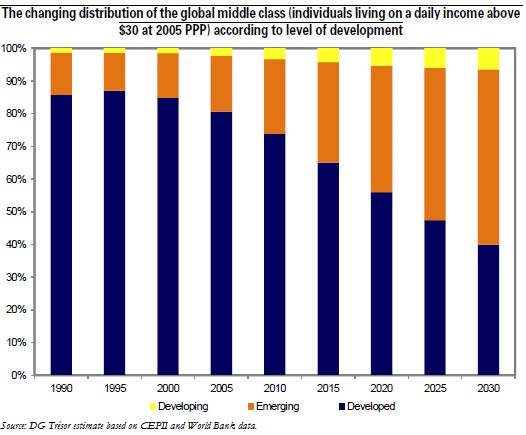Trésor-Economics No. 128 - What next for globalisation?
One of the most remarkable features of the global economy since the early-1990s has been the rapid integration, and consequently growing importance, of the emerging economies, China especially, in the global trading system. This issue of Trésor Economics considers the main medium-term issues and challenges arising from future developments in these economies' supply side on the one hand, and in their demand on the other.
On the supply side, the major emerging countries enjoyed a substantial cost advantage in making their entry into the global trade system over the past two decades. However, recent trends in wages, productivity and exchange rates in these countries, along with an increasingly well-qualified working population and the rapid move upmarket by these firms in these countries are likely to have a profound effect on their productive models. Unit wage costs (UWC) in the manufacturing sector, in China particularly, began rising relative to European and American UWC in the early-2000s, after having fallen steadily since the 1980s.
On the demand side, while the last twenty years have brought a massive reduction in extreme poverty in these countries, the next twenty years are likely to see the rise of a substantial middle class. The number of people living on less than $30 at 2005 PPP per day (i.e. an annual income above $10,000 at 2005 PPP) is expected to double between 2012 and 2030, from slightly less than 1 billion to over 2 billion. Of this additional billion, more than four fifths, or 800 million, will be living in economies currently classified as emerging.
These broad trends can be expected to alter the global economic balance profoundly. To begin with, the change in the productive model of the major emerging countries is likely to redraw the map of international value chains via an intensification of intra-sector trade between developed and emerging economies. Also, it will probably lead to a relocation of unskilled labour-intensive activities to other geographies such as Southeast Asia, India and Africa. In addition, the emergence of a large upper middle class in the emerging economies should provide a sizeable new source of growth for developed countries' businesses.
